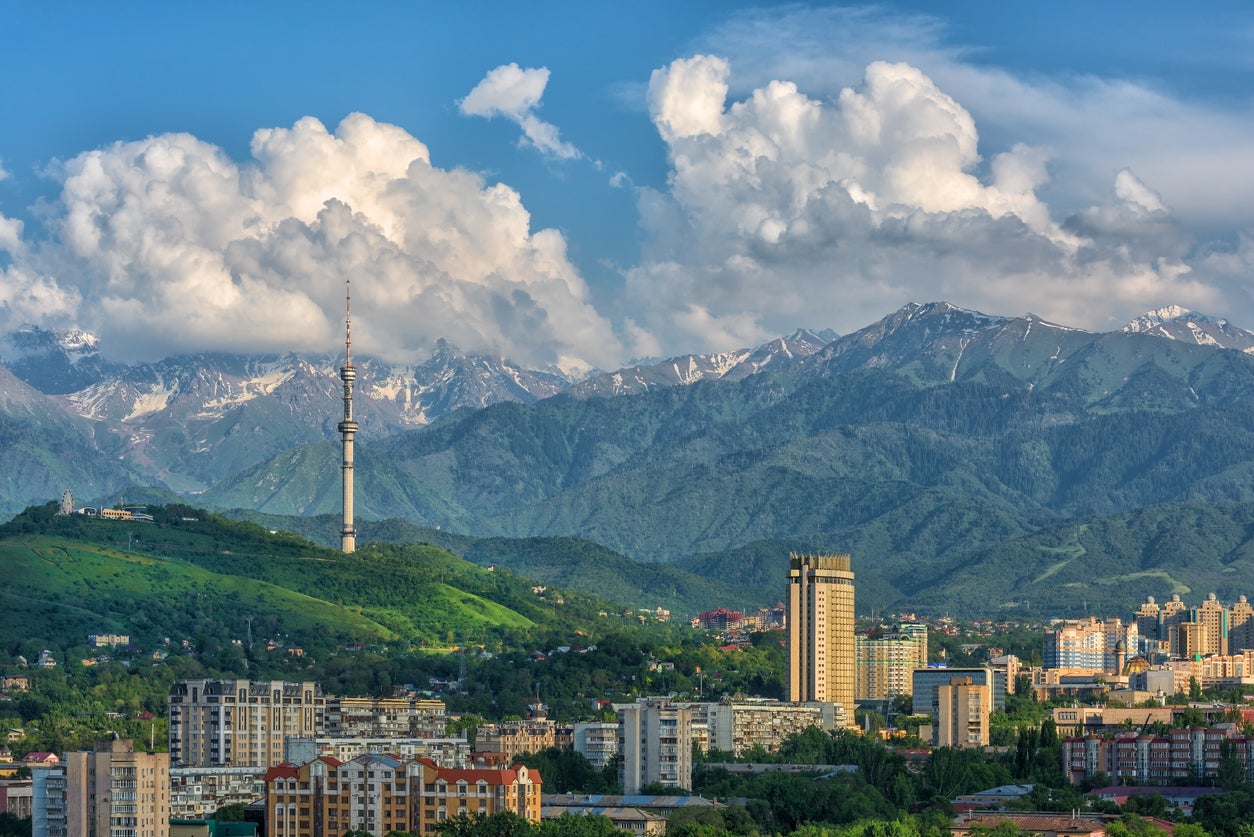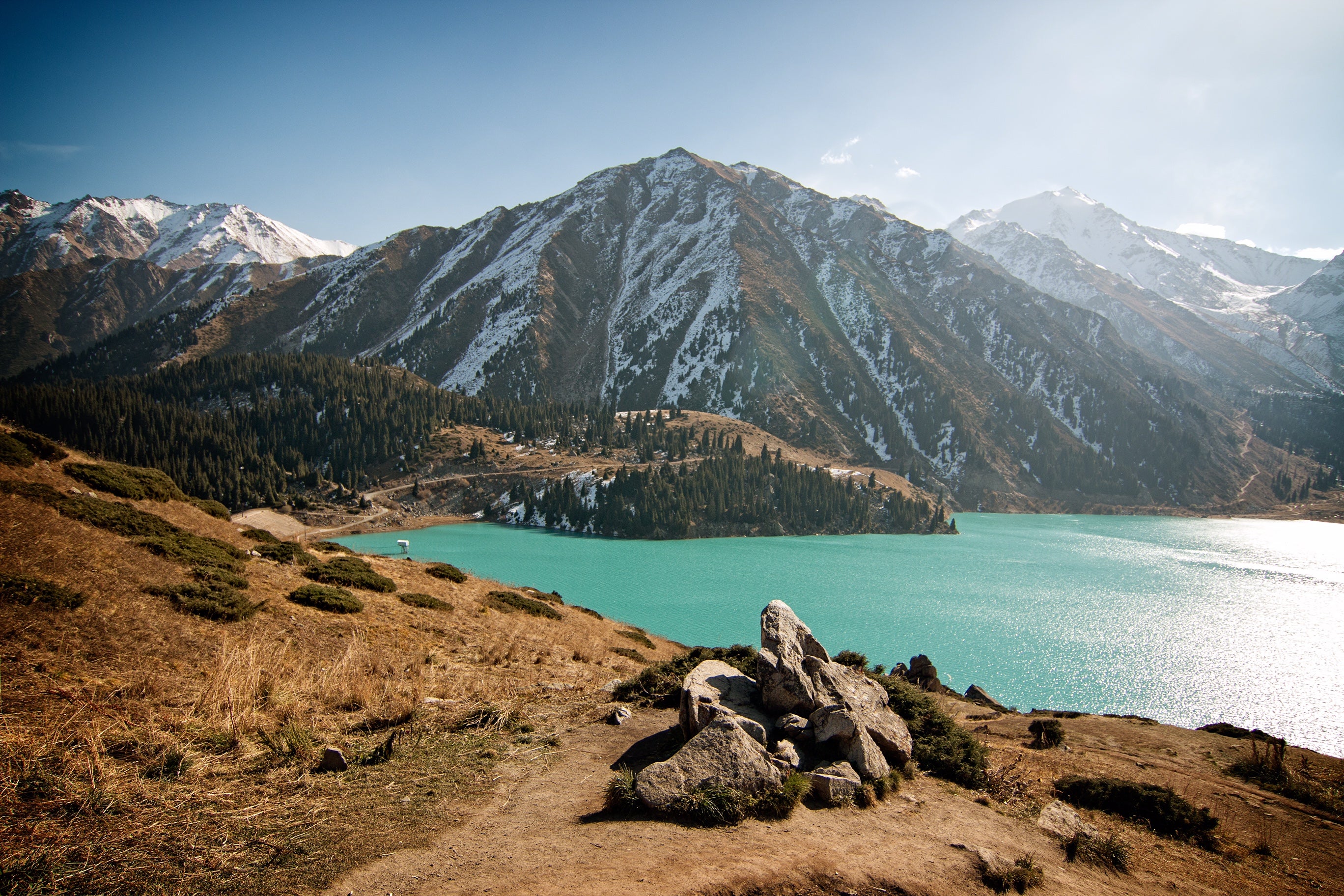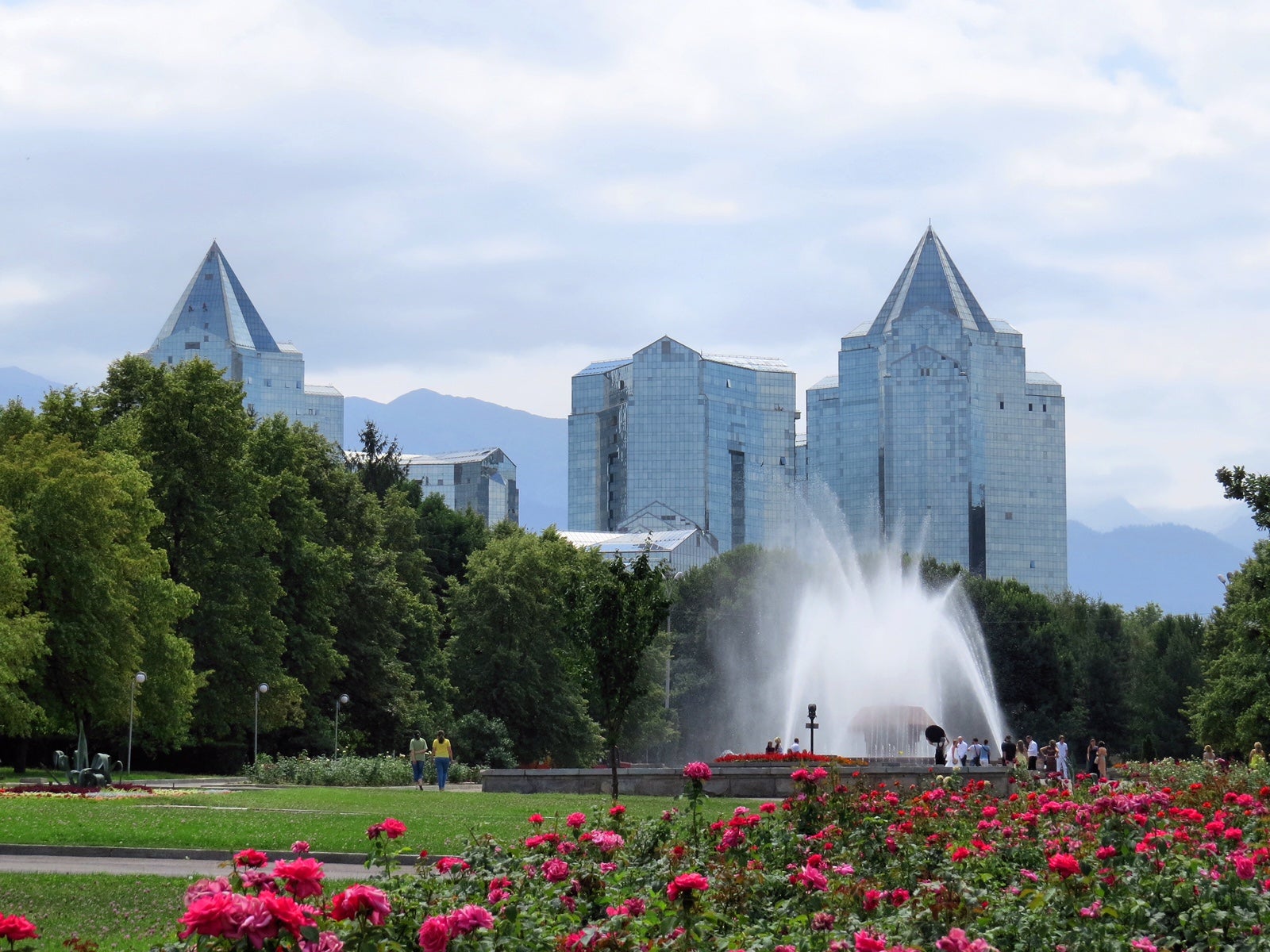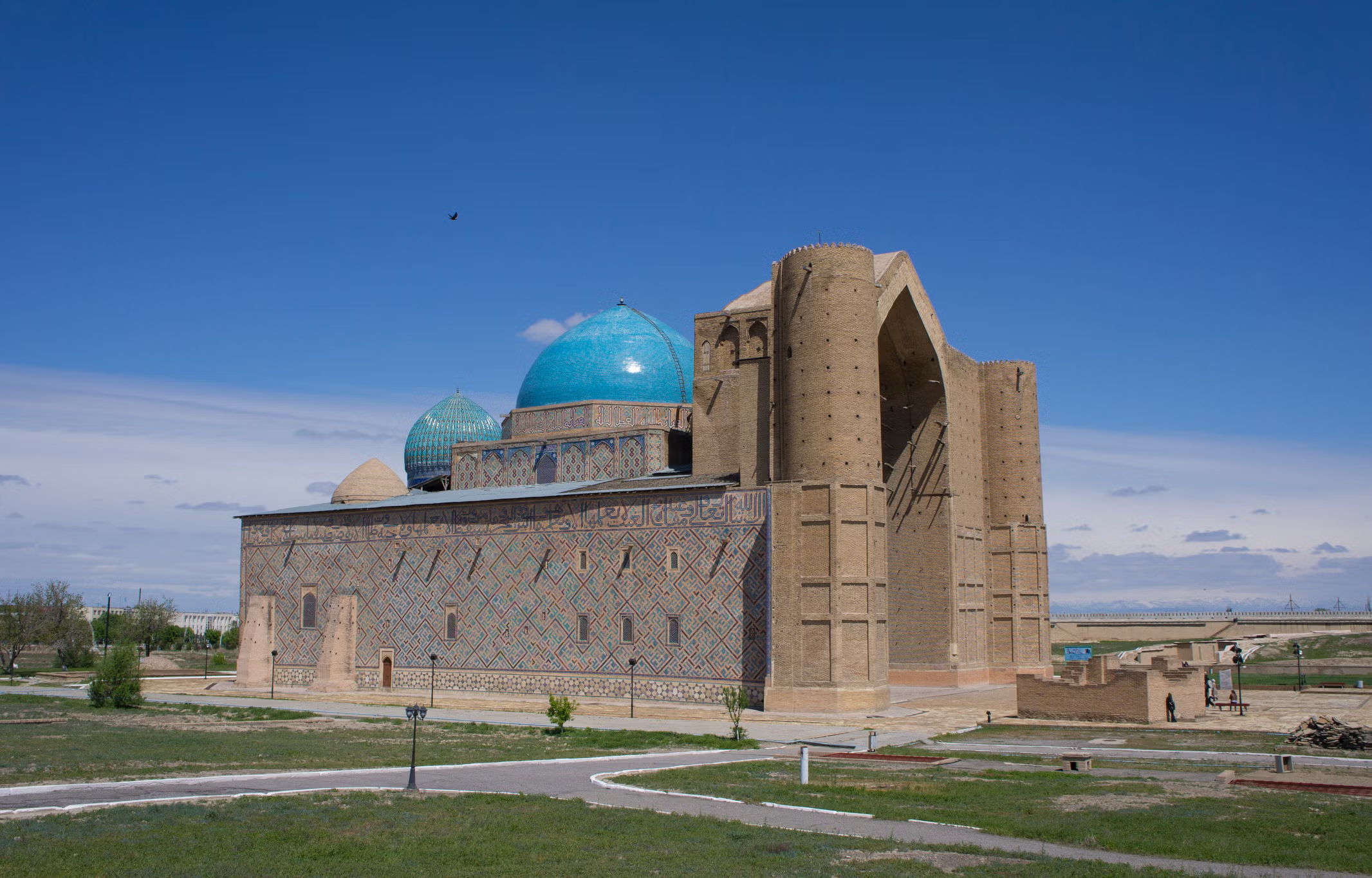While the world shut down, Kazakhstan has been building
As Kazakhstan celebrates its 30th year of independence, Jessica Vincent travels from north to south to see how the former Soviet Union republic is crafting a more prosperous future

Landing in Kazakhstan, the largest landlocked country in the world, feels like dropping into the middle of a vast, unmoving ocean. Tea-coloured plains stretch out in every direction, their windswept gravel merging land and sky into infinity. Like a mirage, strips of freshly laid tarmac and swathes of grass studded with young pines suddenly appear through the dust. The seatbelt sign comes on, and the plane descends into Turkistan International Airport.
I’ve been travelling for as long as I can remember, but I’d never set foot in Asia until now. While the south of the continent has always felt oddly familiar, there was something about Central Asia that remained a mystery. Instead of sipping coconuts in Koh Samui or surfing in Bali, I dreamed of plying ancient trade routes along the Silk Road, visiting 14th-century Turkic mosques and eating fried bread and hand-stretched noodles with nomadic families in the open steppe. So when the opportunity came up to visit Kazakhstan – a vast land of mountains, deserts and skyscraper cities – I jumped at the chance.
I meet my ponytailed guide, Sergei, next to a line of beaten-up Soviet cars outside the airport, built late last year to attract international visitors to the newly appointed capital of Kazakhstan’s southernmost region. “Welcome to Turkistan,” he says as we board a bus for the 40-minute journey into the country’s newest city. Outside, everything looks just as it did from 30,000 feet in the air: miles of impossibly flat land, empty and swirling, with only a few power lines and circling crows to break up the landscape.

“Is any of this used for farming?” I wonder aloud on the journey. “The earth is too dry and it’s too windy. Nothing grows here,” Sergei responds solemnly, his eyes reflecting the haze of the steppe.
But his mood soon brightens. As we inch closer to our destination, empty plains give way to a mega-city in the making: cranes assembling shiny apartment blocks; gardeners pruning parks and squares with gurgling fountains; students pedalling along freshly-laid cycling lanes on American-sized highways.
Empty plains give way to a mega-city in the making: cranes assembling shiny apartment blocks; gardeners pruning parks with gurgling fountains; students pedalling along freshly-laid cycling lanes
“Everything you see was built in the last two years,” Sergei tells me, as we pass a third team of gardeners tending to perfect roadside lawns. “Before, there were just a few houses and a lot of empty space here. But since the president made the city the administrative centre of the Turkistan region, things have developed very fast.”
The Turkistan that exists today is in its infancy, but the concept of having a city here isn’t new. Thanks to its position along the Silk Road, Turkistan - formerly known as Yasi - was the epicentre of Turkic culture, trade and religion for millennia. Recent archaeological findings suggest there was life here up to 3,000 years ago.
“Culturally and spiritually speaking, Turkistan has been important for thousands of years,” says Sergei as he shows me the blue domes and carved doorways of the Unesco-protected Mausoleum of Khoja Ahmed Yasawi, where an 11th-century poet and Sufi master is buried. “But the city began to decline when the Russians invaded in the 19th century. It’s only now that we’re beginning to appreciate Turkistan again.”
In the hope that this shiny new metropolis will once again become the country’s spiritual and cultural centre, funding for new homes and tourist infrastructure has flooded into the city. Hundreds of buildings, including the multi-million-pound entertainment complex Karavan Saray, have been built and more than 30 million trees planted.
“These fruit trees were planted this summer,” Sergei says, pointing to hundreds of saplings sprouting between apartment blocks. “Who knows if they’ll survive the winter here, but the aim is to make Turkistan a place where people can thrive, culturally and financially.”
In Almaty, art galleries and fashion boutiques have sprung up all over, signalling a new era of creativity in the city
Turkistan isn’t the only city that’s on the up. I move on to Almaty, Kazakhstan’s former capital, where wine bars and cafes are breathing life into Soviet-era apartment blocks. Art galleries and fashion boutiques have sprung up all over, signalling a new era of creativity in the city.
On my first night there, I’m invited to a cocktail party hosted by an interior designer. A DJ is playing electro music to a glamorous crowd – artists, influencers and entrepreneurs – and sparkling rosé sourced from a nearby vineyard is flowing.

“You weren’t expecting this from Kazakhstan, were you?” says a young woman in perfect English, between mouthfuls of caviar-topped vol-au-vents. Her name is Amina. Having returned from studying International Relations in the UK, she is working for a local NGO here in Almaty. “Kazakhstan is changing,” she says. “People think of our country as an underdeveloped, poor place. But there are many more opportunities now.”
The next day I travel to Ile-Alatau, a 490,000 acre national park of snow-capped peaks and turquoise lakes just 30 minutes outside of Almaty. There’s hiking, horseback riding and white water rafting to be done here, but I’m headed straight for Ile-Alatau’s star attraction: a brilliantly blue alpine reservoir known as Big Almaty Lake.
The reservoir is more beautiful than I’d ever imagined, its milky turquoise surface reflecting the snow-capped peaks and spruce trees of the Tian Shan mountains like a watercolour painting
As we navigate hairpin turns to terrain 2,500 metres above sea level, Almaty’s futuristic skyscrapers seem a world away as we gaze at southern Kazakhstan’s most pristine wilderness. Alpine meadows bloom with late summer flowers; glaciers melt into crystalline rivers and waterfalls. The razor-sharp Zailiysky Alatau mountains’ forested slopes are home to snow leopards, lynx and the rare Tian Shan brown bear.
We reach Big Almaty Lake just before sunset. There had been talk among the group that the disappearing light might mean the lake would appear less blue, but we needn’t have worried. When we arrive, the reservoir is more beautiful than I’d ever imagined, its milky turquoise surface reflecting the snow-capped peaks and spruce trees of the Tian Shan mountains like a watercolour painting.

We finish our day in the mountains with a wild berry tea, foraged from the nearby forest, in the warmth of Ayusai, the park’s new visitor’s centre - which also functions as a co-working space and glamping site. For the first time ever, travellers can work and camp in luxury among the spruce forests and snow leopards of Kazakhstan’s southern mountains. I vow to come back soon to experience it myself.
I leave the forests and glaciers of Ile-Alatau sooner than I want to. As I climb to 30,000 feet to return home, I look out of the window as I did on my arrival into Turkistan. Dust is swirling and, with Almaty and the Tian Shan mountains out of view, there’s nothing but empty plains once more. But now I know better: the world’s largest landlocked country is far from a swathe of empty space. It’s rich with dazzling nature, sharp modern scenes and curious sights I never could have imagined.
Travel essentials
Adventure tour companies such as Intrepid Travel, G Adventures and Wild Frontiers all run tours to Kazakhstan, though current departure dates and flight options may be limited due to the pandemic.
Join our commenting forum
Join thought-provoking conversations, follow other Independent readers and see their replies
Comments
Bookmark popover
Removed from bookmarks